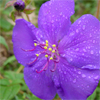Introduction

Dear Readers,
You have now volume 11(2) of Lyonia in front of you. This volume still presents articles from a wide geographical range, covering important topics from around the globe.
Lyonia is currently evaluating its geographical scope and publication format however, and restructuring its editorial team.
We will not be able to accept new papers until these changes have been finalized. Please check back with Lyonia periodically for the respective announcement.

 Download Volume as a PDF
Download Volume as a PDF











